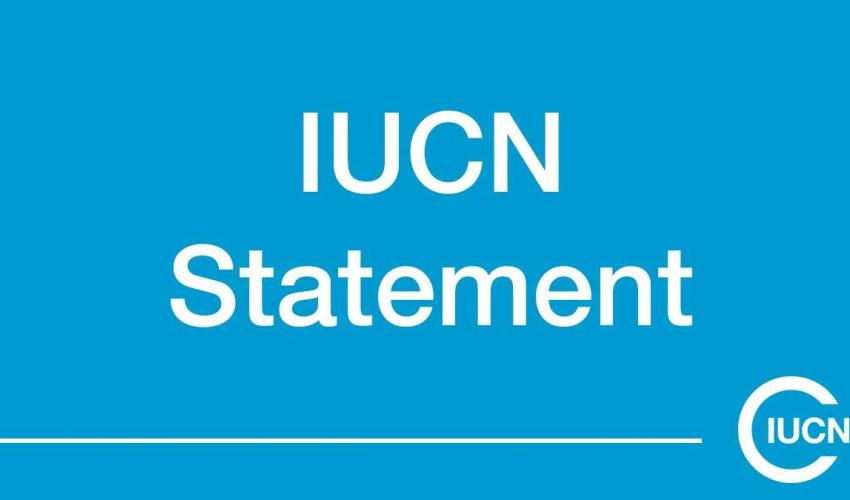Encouraging policy development and best practices for privately protected areas
CEESP News: A contribution from the IUCN WCPA Privately Protected Areas and Nature Stewardship Specialist Group
Often missing from policy discussions, privately protected areas (PPAs) could play an important role in achieving global targets. The PPA and Nature Stewardship Specialist Group of the IUCN World Commission on Protected Areas recently published guidance on PPAs and is encouraging greater involvement of the private sector engagement in conservation.

Photo: © Sue Stolton
Private initiatives have been responsible for conserving nature for centuries. Yet recent global conservation has focused on the actions of States. As signatories to agreements such as the Convention on Biological Diversity (CBD), it is nations whose conservation actions are being encouraged, publicized and criticized.
Left almost completely out of these vital global discussions is the role that privately protected areas (PPAs) are playing and could play in achieving global targets. Many of the world’s most important places for biodiversity remain outside formal protected areas and occur on private, communal or indigenous peoples’ land.
As countries enhance their efforts to meet the CBD’s Aichi Targets, the establishment and recognition of PPAs offers a major opportunity for engaging more stakeholders in conservation efforts and expanding the conservation estate to protect, manage and, in some cases, restore biodiversity that lie beyond the boundaries of state-governed and managed protected areas.
The Privately Protected Areas and Nature Stewardship Specialist Group of the IUCN World Commission on Protected Areas is a volunteer group networking 440 experts and their organizations involved in private sector engagement and conservation. In 2018, the group published guidelines on a range of best practices for establishing PPAs and securing effective long-term conservation on private properties. Published initially in English, a Spanish translation was launched in 2019 and a French version will be launched at IUCN’s World Conservation Congress (WCC) in 2020. All the guidance is based on a diversity of PPA best practice from around the world.
Owners of PPAs are wide-ranging, as are their experiences and the contributions they can bring to effective area-based conservation. They include individuals and groups of individuals; non-governmental organisations (NGOs); corporations, both commercial companies and sometimes corporations set up by groups of private owners to manage groups of PPAs; for-profit owners, including many involved in tourism-related activities; research entities such as universities, field stations and religious entities who manage many sacred natural sites around the world.
For an area under private ownership or governance to be designated or declared to be a PPA, it must meet the IUCN definition of a protected area and must be able to demonstrate the intent to achieve conservation of nature in the long-term. Achieving this degree of permanence usually requires a specific undertaking, contract, articles of association, covenant, registered servitude in favour of nature conservation over the title to the property, memorandum of understanding, or other instrument that is binding on current and future successors in title in the long-term.
There are already many thousands of PPAs around the world, with more being established. But until recently, PPAs have remained a largely hidden resource; they are often omitted from international conservation reporting mechanisms and left out of regional conservation strategies. The recognition of existing private conservation efforts, and the establishment of new PPAs, can fill important gaps in national protected area systems in terms of geographic coverage, ecological representation and protection of endangered habitats and species. Purchase or donation of land and water by individuals can often increase the speed of response to conservation challenges as compared with lengthy government processes of protected area designation. PPAs also bring a wide range of stakeholders into the conservation, enabling private citizens to contribute directly to conservation efforts through a bottom-up process and private entities to contribute to the public good.
In this important year for conservation, the WCPA specialist group is encouraging all those involved in area-based conservation to embrace the role and importance of PPAs as a contribution to the challenge of conserving biodiversity. The best practice guidelines provide guidance on how to achieve conservation effectiveness; and a conservation campus training event will be held at the WCC to explore the guidance in more detail. Our work will also begin to focus on the contribution of private initiatives to reporting other effective conservation measures (OECMs); which are likely to be an important part of the targets for area-based conservation over the next decade.
The PPA best practice guidelines can be downloaded at: https://portals.iucn.org/library/node/47916 (English) and https://www.iucn.org/node/32353 (Spanish)
For more information on the WCPA specialist group please visit: www.privateconservation.net



